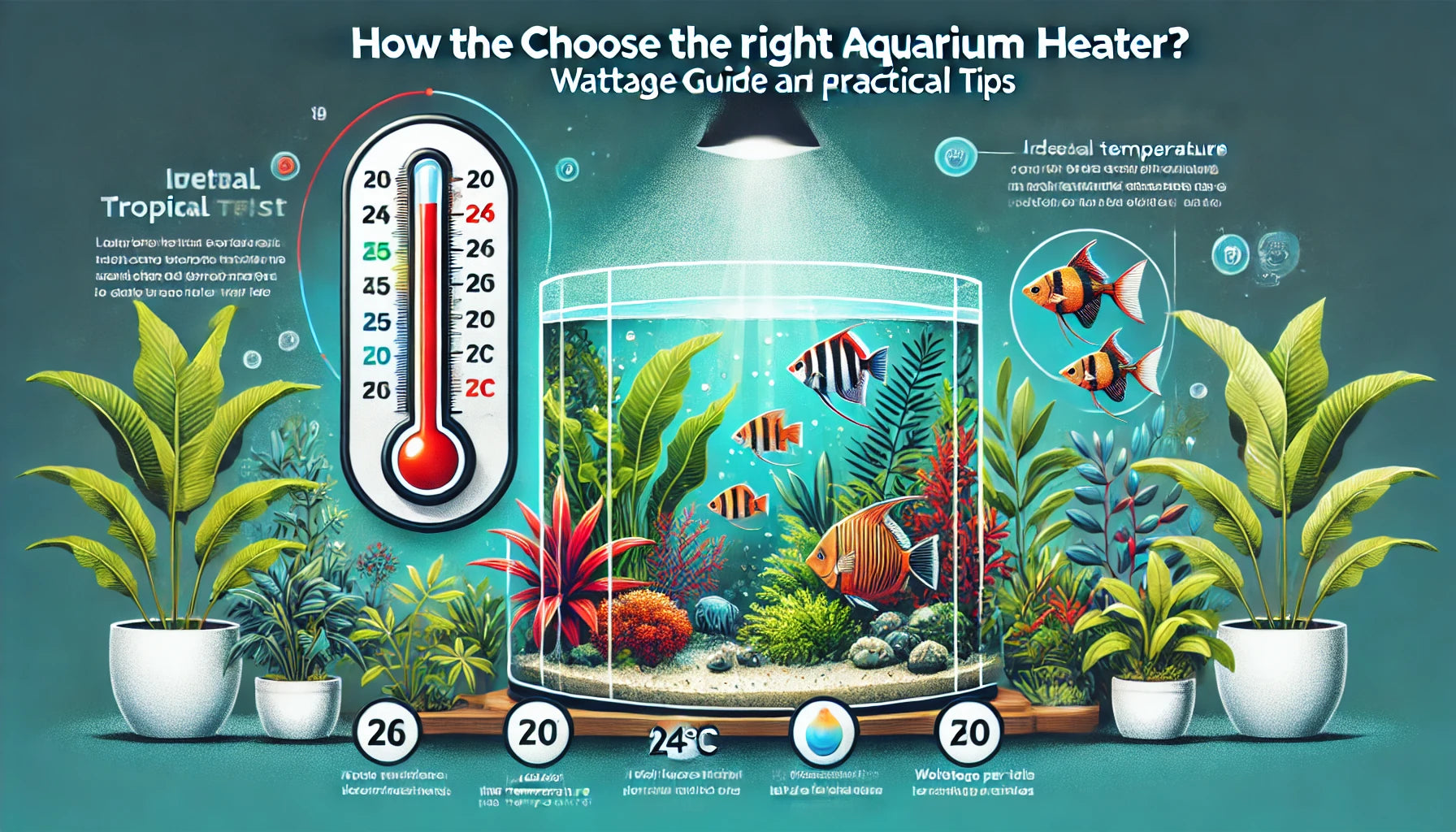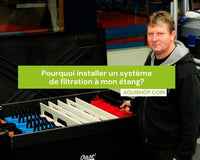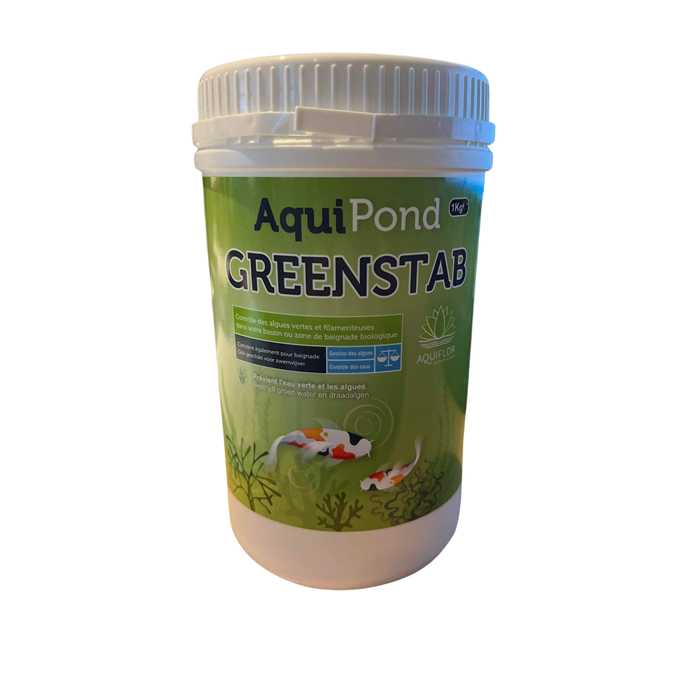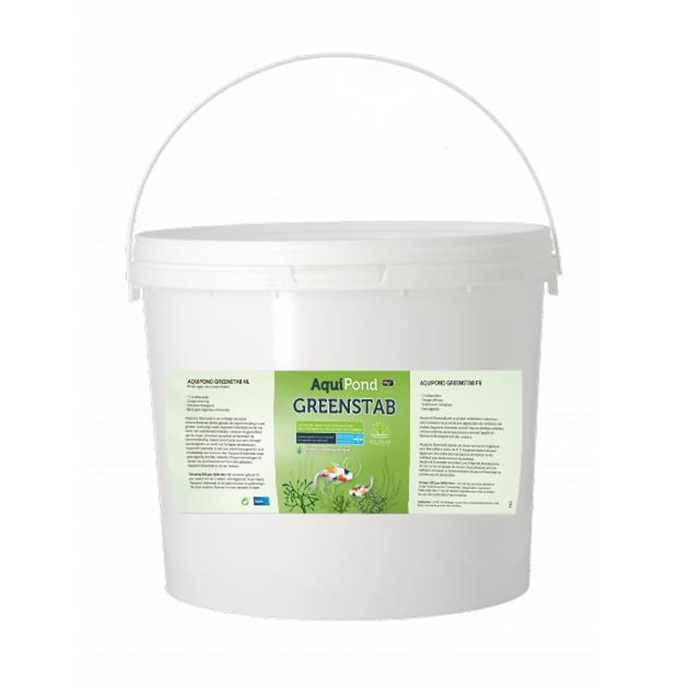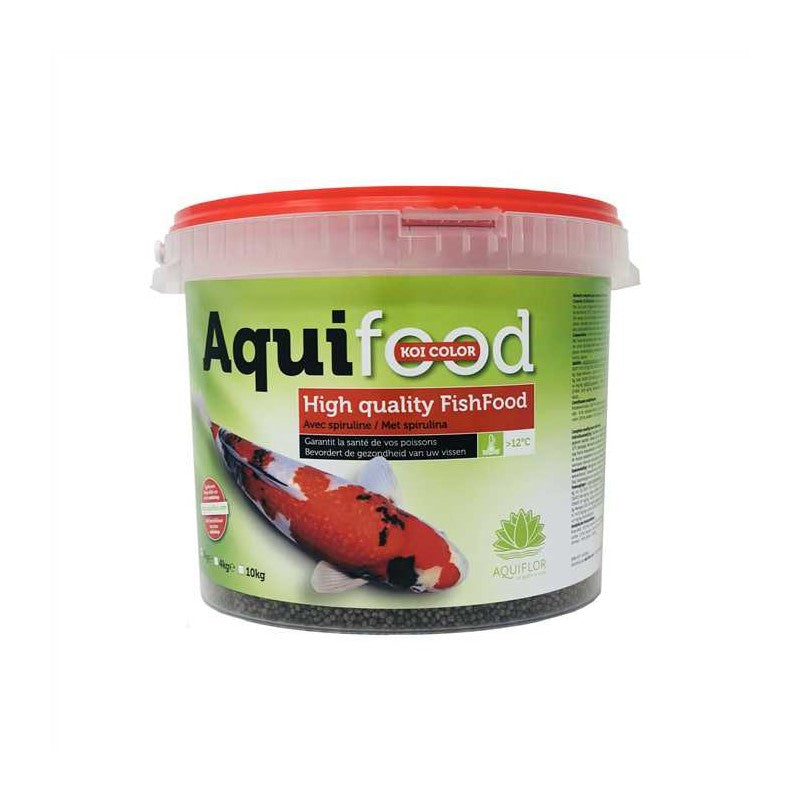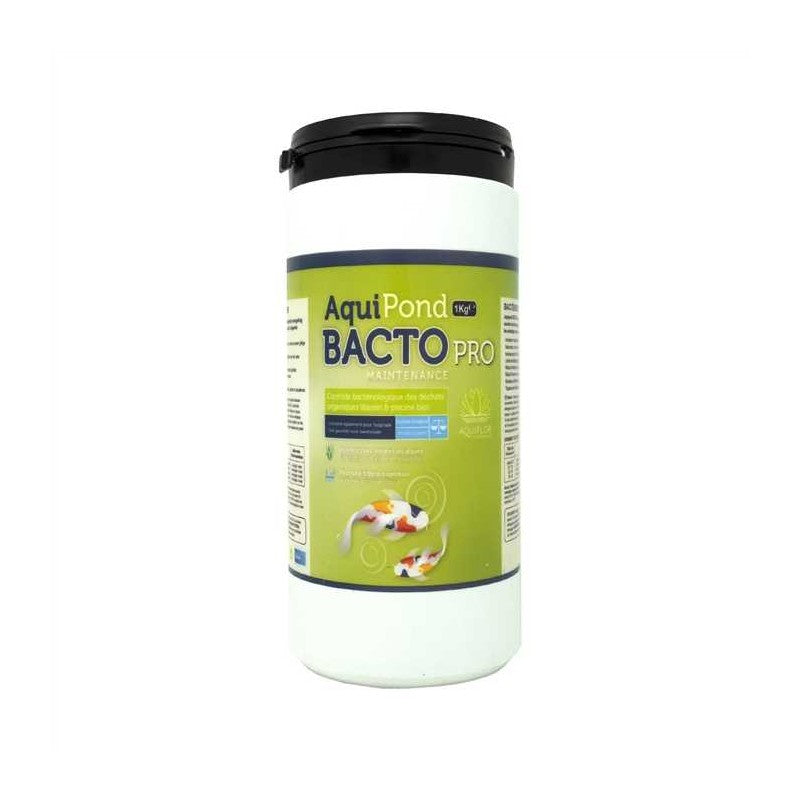Are you new to aquarium keeping or want to improve the conditions of your aquarium? Heating is a key element to ensure the health and well-being of your tropical fish.
But how do you know which type of heating to choose? And above all, how many watts are needed to maintain an ideal temperature? In this article, we answer all your questions to help you make the right choice.
1. Why is a heater essential for your aquarium?
- Importance of maintaining a stable temperature for tropical fish.
- Consequences of an unsuitable temperature on the health of fish (stress, diseases, etc.).
Maintaining a stable and suitable temperature is one of the essential bases for ensuring the well-being of the fish in your aquarium. Unlike land animals, fish are ectotherms, which means that their body temperature depends directly on that of their environment. Appropriate heating therefore plays a crucial role in their survival, health, and comfort.
Tropical fish and their specific needs
Most tropical fish, such as guppies, neon fish, discus and angelfish, require a water temperature between 24 and 28°C , depending on the species. Water that is too cold can slow down their metabolism, weaken their immune system and cause diseases such as ichthyophthiriosis ("white spot disease"). Conversely, water that is too high can lead to significant stress, a lack of oxygen in the water and increased mortality.
Temperature fluctuations: an underestimated danger
Even if the ambient temperature in your home seems to be fine, it is rare that it remains perfectly stable throughout the day. In winter, at night, or when the heating in your home suddenly drops, the temperature of the aquarium can drop quickly, causing thermal stress for your fish. These fluctuations are particularly dangerous for fragile species such as discus or clownfish.
Heating helps compensate for these fluctuations by keeping the water at a constant temperature, whatever the external conditions.
A key element to recreate the natural ecosystem
Tropical fish come from rivers, lakes, and oceans where the temperature remains relatively constant throughout the year. In an aquarium, heating can simulate this natural aspect of their habitat. This promotes their instinctive behavior, reproduction, and even their coloring, which can become more vibrant in an optimal environment.
Indirect effects on the aquarium ecosystem
In addition to fish, temperature also plays a role in the health of aquatic plants, the functioning of nitrifying bacteria (essential for water quality), and algae blooms. Water that is too cold can slow down the biological processes needed to maintain balance in the aquarium, which could lead to pollution spikes or imbalances.
Exceptions: aquariums without heating
It is important to note that not all aquariums necessarily need a heater. For example:
- Coldwater aquariums, with species like goldfish or danios, can thrive without heating, as these fish tolerate lower temperatures.
- However, even for these aquariums, a heater can be useful in environments where the ambient temperature is particularly cold, to avoid too great fluctuations.

In short, an aquarium heater is much more than just an accessory. It is an essential tool for recreating a stable and natural habitat, promoting the health, longevity and development of your fish.
2. Calculate the power required: how many watts for your aquarium?
> General rule: 1 watt per liter of water for a well-insulated aquarium in a temperate room.
Choosing the right power for an aquarium heater is crucial to ensure a stable temperature that is suitable for your fish. Too low, the heater will be ineffective, especially in winter or in cold rooms. Too powerful, it risks causing sudden variations or overheating the water. Here's how to accurately determine the power required for your aquarium.
Factors that influence heating power:
-
The ambient temperature of the room:
- If your aquarium is in a heated room, around 20-22°C, the basic rule is usually sufficient.
- If the room is cold or poorly insulated (example: 15°C or less), increase the heating power by 25 to 50% .
- Example: A 100 litre aquarium in a 15°C room might require a 150 watt heater.
-
The target temperature:
- The difference between the ambient temperature and the desired temperature determines the power required. The greater the difference, the more watts will be required.
- Example: If the room is 18°C and you need to reach 26°C, the difference is 8°C, requiring higher power.
-
The size and shape of the aquarium:
- Very large (over 200 litres) or elongated aquariums may require two medium wattage heaters placed at the ends to ensure even heat distribution.
- Example: A 300 litre aquarium can use two 150 watt heaters instead of a single 300 watt heater.
-
Aquarium insulation:
- Aquariums with lids or hoods retain heat better.
- An open aquarium loses more heat, especially in winter or in a cold room, and therefore requires slightly more power.
-
The type of fish and plants:
- Tropical fish (such as discus or angelfish) require a stable temperature of 25-28°C, sometimes requiring more efficient heating.
- Conversely, some fish such as goldfish or danios prefer cooler temperatures (18-22°C), reducing the need for heating.

Practical table for choosing heating power
| Aquarium size | Heated room (20-22°C) | Cold room (15°C) | Very cold (10°C) |
|---|---|---|---|
| 50 liters | 50 watts | 75 watts | 100 watts |
| 100 liters | 100 watts | 150 watts | 200 watts |
| 200 liters | 200 watts | 300 watts | 400 watts |
| 300 liters | 300 watts (2x150W) | 450 watts (2x225W) | 600 watts (2x300W) |
Can two heaters be used?
In some cases, the use of two medium-power heaters instead of one powerful one is recommended:
- Better heat distribution in large aquariums.
- Increased safety: if one heater fails, the other can temporarily compensate.
- Example: For a 200 litre aquarium, use two 100 watt heaters placed at each end.
Avoid overkill
A heater that is too powerful can cause the temperature to rise quickly and uncontrollably, which is stressful for your fish. It is therefore best to respect the actual needs of your aquarium and not exceed the recommended power.
When to adjust power?
- In summer: You can reduce or turn off the heating if the ambient temperature is sufficient to maintain the water at the required level.
- In winter: Check the water temperature regularly, especially if your house is poorly heated.
By calculating the power required based on your environment and your fish, you guarantee an optimal temperature and better longevity for your equipment. A well-chosen heater is the key to a healthy and harmonious aquarium!
Example of a practical table:
- 50 L aquarium → 50 W recommended.
- 100 L aquarium → 100 W recommended.
- 200 L aquarium → 200 W recommended.
If the room is cold: increase the power by 25-50%. This rule does not take into account certain external factors that can influence your heating needs.
3. Types of Aquarium Heaters
Choosing the right type of heater for your aquarium depends on several factors: the size of your tank, your preferences in terms of temperature management, and of course, your budget. Each type of heater has its pros and cons. Here is a detailed guide to help you make the right choice.
- Internal heaters (most common).
- External heaters (ideal for larger aquariums).
- Heating cables (for planted aquariums).
- Combined heaters with filter.

3.1. Internal heating
Internal heating is the most common type of aquarium heater. It is submerged directly into the water and maintains a stable temperature by heating the surrounding water.
Benefits :
- Easy to install: just attach it with suction cups to the aquarium wall.
- Wide range of sizes and powers, suitable for aquariums of all sizes.
- Usually equipped with a built-in thermostat to set the desired temperature.
Disadvantages:
- May be unsightly as it is visible in the aquarium.
- Requires strategic placement to ensure even heat distribution.
Who is it for? Ideal for small to medium sized aquariums and for aquarists looking for a simple and economical solution.
3.2. External heating
The external heater is integrated into the external filtration system. The water is heated as it passes through the filter, before being reintroduced into the aquarium.
Benefits :
- Invisible in the aquarium, offering a more aesthetic appearance.
- Even heat distribution thanks to water circulation.
- Ideal for large aquariums requiring a stable temperature.
Disadvantages:
- More complex installation, requiring an external filter.
- Often more expensive than internal heaters.
Who is it for? Perfect for experienced aquarists and large aquariums (150 litres and up), where visual appeal is important.
3.3. Underfloor heating (heating cables)
Heating cables are placed under the aquarium substrate and radiate heat from the bottom.
Benefits :
- Stimulates plant growth by promoting gentle water circulation under the substrate.
- Even heating over the entire surface of the aquarium.
Disadvantages:
- Less effective at maintaining a stable temperature in cold rooms.
- More complex installation, generally carried out when setting up the aquarium.
Who is it for? Recommended for planted aquariums or specific aquariums (such as aquascapes) where plants are a priority.
3.4. Combined heaters with filter
Some filter models, particularly in high-end filtration systems, directly integrate a heating module.
Benefits :
- Space saving and aesthetic, because everything is integrated into a single device.
- Ease of use to maintain clean and heated water simultaneously.
Disadvantages:
- High cost.
- Reliance on a single device: if the filter fails, you lose both filtration and heating.
Who is it for? Ideal for high-end aquariums or for aquarists wanting all-in-one equipment.
3.5. Cordless heaters (new technology)
New technologies, such as wireless heaters, are beginning to emerge. These devices heat water by induction or use invisible solutions integrated into the aquarium decor.
Benefits :
- Absolute discretion, no visible devices.
- Innovative technology offering an alternative to traditional heating.
Disadvantages:
- Still not widespread and expensive.
- Limited availability depending on region.
For whom? For new technology enthusiasts and those wanting a minimalist aquarium.
3.6. Specific heaters for nano-aquariums
For small aquariums (less than 30 litres), compact heaters are available. These units are designed for small environments, offering suitable power and minimal space requirements.
Benefits :
- Easy to hide in small aquariums.
- Low power consumption.
Disadvantages:
- Less accurate for very small temperature fluctuations.
- Not suitable for large aquariums.
Who is it for? Owners of nano aquariums housing fish such as bettas or shrimp.
3.7. Criteria to consider when choosing your type of heating
- Aquarium Size: Larger aquariums often benefit more from external or combination heaters, while smaller aquariums prefer internal or nano heaters.
- Aesthetics: If appearance matters to you, opt for external or cordless heaters.
- Budget: Internal heaters remain the most affordable, but for a long-term investment, an external heater may be more cost-effective.
- Aquarium Type: For a planted aquarium, heating cables offer an added benefit.
By understanding the different types of heaters and their specificities, you will be better equipped to make a choice that is suited to your aquarium and your needs. A well-chosen heater ensures a stable and comfortable environment for your fish and plants.
4. Tips for choosing the best heater
- Reliability and precision (recognized brands: Oase, JBL, Superfish, ...).
- Importance of the built-in thermostat.
- Safety: automatic shutdown in case of overheating.
- Specific options: digital adjustment, LED for temperature.
Choosing the right heater for your aquarium can seem complicated, but by following these simple tips, you'll find the perfect model in no time!

👉 Adjust the power to the size of your aquarium
- Remember the basic rule: 1 watt per liter of water .
- For larger aquariums 🌊, use two heaters for even heat and increased safety.
👉 Prioritize accuracy 🎯
- Choose heating with an adjustable thermostat and a digital screen for easy management.
- An external thermometer can help check stability.
👉 Consider your surroundings 🏠
- If the room is cold ❄️, choose a more powerful model or an external heater to compensate for temperature differences.
👉 Safety and reliability above all 🔒
- Invest in recognized brands to avoid unpleasant surprises and choose heaters with automatic shut-off in the event of overheating.
With these practical tips, you can create the perfect environment for your fish 🐠 and enjoy a harmonious aquarium!
5. Installation and maintenance of the aquarium heater
- Where to place the heater for even heat distribution.
- Tips to extend the life of the heater (regular cleaning).
A well-installed and properly maintained heater ensures a stable temperature and extends the life of your equipment. Here's how to optimize its installation and ensure it works properly.
5.1. Installation: where and how to place it? 🛠️
-
Choose the right location:
- Install the heater near the filter or in an area where water circulates well to ensure even heat distribution. 🌊
- In large aquariums, use two heaters placed at opposite ends to avoid "cold spots."
-
Secure the heater securely:
- Use the suction cups provided to attach the heater to a wall of the aquarium. Make sure it is submerged to the level indicated on the unit.
-
Let it adjust before turning it on:
- After installing the heater, wait 15 to 30 minutes before plugging it in to avoid thermal shock.
-
Adjust the temperature precisely:
- Set the thermostat to the desired temperature, usually between 24 and 28°C for tropical fish. 🐠
- Check using an external thermometer to confirm that the temperature is stable.
5.2. Regular maintenance: keep it performing 🧼
-
Clean the heater regularly:
- Limescale and algae deposits can reduce the efficiency of the heater. Clean it gently with a sponge or soft brush to avoid damaging it.
-
Check the thermostat:
- Check the temperature accuracy at least once a month with a separate thermometer to detect any deviations.
-
Watch for signs of malfunction:
- If the heater makes noise, no longer heats properly or has cracks, replace it immediately to avoid any risk to your fish.
-
Avoid thermal shock:
- When changing water, temporarily turn off the heater to prevent it from overheating by staying out of the water.
5.3. Additional safety precautions 🔒
-
Invest in a model with automatic shut-off:
- Modern heaters automatically turn off if they are out of water or overheat.
-
Use a lid:
- A cover reduces heat loss and protects the heater from accidental knocks.
With proper installation and regular maintenance, your aquarium heater will operate efficiently, ensuring a stable and comfortable environment for your fish. 🐟

6. Frequently Asked Questions
- “My aquarium is 80 liters, how many watts should I plan for?”
- “What to do if the temperature varies greatly in the room?”
- “Can you use two heaters in a large aquarium?”
Answering aquarists' questions is essential to help them equip themselves properly and maintain an ideal environment for their fish. Here are the answers to the most common questions!

👉 What heating power should I choose for my aquarium?
- The general rule of thumb is to allow 1 watt per litre of water , but this depends on the ambient temperature and your specific needs. For example, a 100 litre aquarium in a 15°C room might require a 150 watt heater.
👉 Where should I place my heater in the aquarium?
- Place it near the filter or water circulation area for even heat distribution. If using two heaters, place them at opposite ends.
👉 How do I check if my heating is working properly?
- Use an external thermometer to regularly monitor the water temperature and detect any deviations. A good heater should maintain a stable temperature without fluctuations.
👉 My heating is noisy, is this normal?
- No, a noisy heater may be a sign of a problem (breakdown, limescale). Unplug it and clean it following the manufacturer's instructions.
👉 Should I turn off the heater during water changes?
- Yes, always! 🔌 Turn off your heater to prevent it from overheating or cracking when out of the water.
👉 What to do if the water temperature fluctuates a lot?
- Check that your heater is suitable for the size of your aquarium and the ambient temperature. If necessary, invest in a more powerful model or use two heaters.
👉 My heating has stopped working, what should I do?
- If you notice a fault, replace your heater immediately to avoid heat stress to your fish. That's why it's always useful to have a backup heater. 🔒
Conclusion :
Choosing a heater for your aquarium depends on several factors: aquarium size, ambient temperature, and the specific needs of your fish. By following these tips, you can be sure to create an optimal environment for your aquatic companions.

